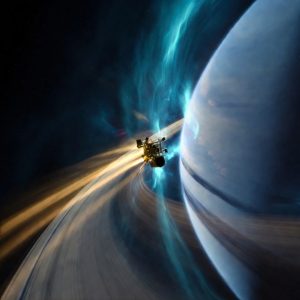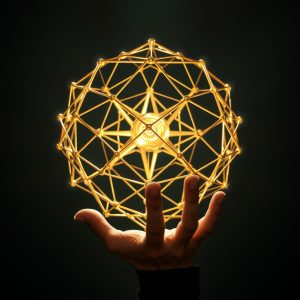
Revolutionizing Reflection: Advances in Mirror Technology Transform Astronomy, Quantum Computing, and Beyond
As we continue to push the boundaries of human knowledge and innovation, a crucial component in many cutting-edge applications is receiving increasing attention: mirror technology. From the Extremely Large Telescope (ELT) in Chile’s Atacama desert to ultra-small quantum mirrors and ultra-flat EUV mirrors, researchers are developing advanced mirror technologies that are revolutionizing our understanding of the universe and enabling groundbreaking breakthroughs.
Gazing into the Cosmos: The ELT’s Mirrored Marvel
At the forefront of this technological leap is the ELT, currently under construction in Chile. This behemoth telescope will boast five colossal mirrors, with the largest measuring a staggering 39 meters in diameter – an unprecedented size for an optical telescope. Each mirror comprises 798 hexagonal segments, carefully designed to collect and concentrate light from distant stars and galaxies. The ELT’s gargantuan mirrors will allow scientists to study the universe in unparalleled detail, unraveling mysteries that have long been shrouded in obscurity.
The sheer scale of these mirrors is awe-inspiring, but their significance extends far beyond mere size. By enabling researchers to observe faint signals from distant celestial bodies, the ELT’s mirrors will facilitate a deeper understanding of the cosmos and its many secrets. For instance, scientists hope to use the telescope to study the formation of the first stars and galaxies in the universe – an era known as the Cosmic Dawn.
Quantum Mirrors: A Glimpse into the Future
In a separate corner of the research world, scientists at the Max Planck Institute for Quantum Optics in Germany have made an astonishing breakthrough. By carefully arranging 200 atoms, they created a collective behavior that effectively acts as a mirror, reflecting light with remarkable precision. This quantum mirror is so small it cannot be seen with the naked eye – an extraordinary feat considering its potential impact.
This development holds immense promise for the field of quantum computing. Quantum networks, which rely on the principles of superposition and entanglement, could become “hack-proof” thanks to this technology. Secure data transmission and communication are paramount in today’s digital age, and a quantum mirror-based network would provide unparalleled security features. Moreover, researchers envision potential applications in fields like cryptography, where encryption methods will be rendered obsolete by the inherent quantum properties of these mirrors.
Extreme Precision: EUV Mirrors
Meanwhile, Zeiss – an optics company based in Germany – is pushing the boundaries of mirror manufacturing with their ultra-flat mirrors for extreme ultraviolet lithography machines (EUVs). These precision-engineered mirrors are used to print computer chips and require accuracy equivalent to bouncing light off a golf ball on the moon. With wavelengths as small as 13.5 nanometers, EUV mirrors enable image clarity at an incredibly tiny scale – crucial for developing high-performance computing devices.
Zeiss’s EUV mirrors represent another critical breakthrough in mirror technology. As semiconductor manufacturing continues to shrink transistor sizes and increase processing power, researchers rely on increasingly precise optics to fabricate these minuscule components. The development of ultra-flat EUV mirrors is a vital step toward advancing our understanding of the fundamental limits of computing.
A Mirror’s Reflection: Implications for the Future
As we gaze into the mirror’s reflection, it becomes clear that these advancements have far-reaching implications for various fields. In astronomy, the ELT will enable us to unravel mysteries hidden in the cosmic depths. Quantum computing and cryptography will benefit from the security features provided by quantum mirrors, while semiconductor manufacturing will see improved efficiency thanks to ultra-flat EUV mirrors.
In the grand tapestry of human knowledge, mirror technology represents a critical thread that weaves together disparate disciplines. As researchers continue to push the boundaries of what is possible with these technologies, we can anticipate significant breakthroughs and discoveries that will shape our understanding of the universe and drive innovation in various fields. The future holds tremendous promise for those who dare to reflect on its potential.
Conclusion: A Bright Reflection
The latest advancements in mirror technology have illuminated a path forward for researchers and innovators. As these technologies continue to evolve, they are poised to revolutionize our understanding of the universe and our ability to develop new innovations. By reflecting on the progress made so far, we can anticipate a bright future filled with endless possibilities.
In this article, we have explored some of the most remarkable developments in mirror technology – from the ELT’s gargantuan mirrors to ultra-small quantum mirrors and ultra-flat EUV mirrors. Each breakthrough represents a crucial step toward advancing our knowledge of the cosmos and pushing the boundaries of innovation.
As we look ahead, it is clear that mirror technology will continue to play a vital role in driving progress in various fields. Whether you are an astronomer studying distant galaxies or a quantum physicist working on hack-proof networks, the advancements made in mirror technology will have significant impacts on our understanding of the universe and our ability to develop new innovations.
The future of mirror technology holds tremendous promise, and as researchers continue to push the boundaries of what is possible, we can anticipate groundbreaking discoveries that will shape our understanding of the cosmos and drive innovation. By reflecting on these advancements and speculating about their impact, we can gain a deeper appreciation for the critical role that mirror technology plays in advancing various fields.
Additional Resources
For those interested in learning more about the latest developments in mirror technology, there are numerous resources available online. Some recommended sources include:
- The Extremely Large Telescope (ELT) project website
- The Max Planck Institute for Quantum Optics research group on quantum mirrors
- Zeiss’s EUV mirror manufacturing process overview
By exploring these and other resources, you can gain a deeper understanding of the advancements being made in mirror technology and their potential implications for various fields.






I am so glad that this article exists! I mean, who doesn’t love a good story about mirrors? It’s like the universe is reflecting our own awesomeness back at us!
But seriously, these advancements in mirror technology are truly mind-blowing. I mean, 39 meters in diameter for the ELT? That’s like, a whole lot of mirrors! And quantum mirrors that are smaller than atoms? It’s like something out of a sci-fi movie!
I’m curious, though – have you guys ever thought about how this technology could be used to create some kind of mirror-based portal to another dimension? I mean, it’s not like we haven’t seen that in movies before…